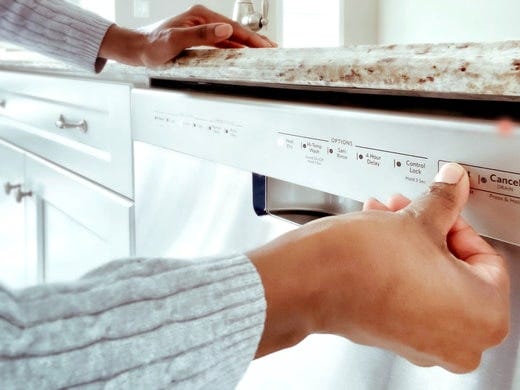
Dishwashing temperature guidelines
Find out everything you need to know about your dishwasher water with Finish’s dishwashing temperature guidelines.

When it comes to your dishwasher, you want it to work as well as it can – from shiny, gleaming glasses to the effective removal of dirt and build-up from used dishes. Though we rely on our dishwashers to do all of this and more, many of us aren’t actually aware of how our dishwashing temperature affects performance. From how the system operates to the optimal washing temperature and what to do if it isn’t high enough, here’s everything you need to know.
What is the best temperature for dishwashers?
A dishwasher’s temperature is fixed to make sure it’s the most efficient that it can be. An average dishwasher temperature runs its main cycle at about 51-60°C. This is because the temperature of water in the dishwasher needs to be hot enough to ensure that the detergent is dissolved and activated, while also removing any leftover food and grease. During the rinse phase the water is heated to slightly higher temperatures of around 80°C to make sure the dishes are safe to eat from.
Dishwasher temperature and food safety
Any temperature over 60°C is too hot for your hands to withstand. However, dishwashing temperatures tend to be far higher, and the hotter the water, the more thorough that your dishes and cutlery can be cleaned.
How to tell if your dishwasher water temperature is not hot enough
If your dishwasher water temperature is not hot enough via tell-tale signs, such as if your dishes do not come back as clean as they should be, or if your dishwasher detergent tablet has not fully dissolved. If you suspect your water temperature is lower than 50°C, consult your hot-water heater’s manual or consult a service technician to adjust your settings.
Can water temperature being too hot to damage your dishwasher?
Although your dishwasher water temperature needs to be hot enough for sparkling clean glasses and a thorough clean, high temperatures combined with lax maintenance can be bad for your dishwasher itself. Here are some of the problems that arise and how best to fix them:
Hot water and limescale
High temperatures mean that the natural calcium and magnesium content of water can cause limescale to form on the inside of your dishwasher. Over time, this can pose a problem, as it can hamper the efficiency of your dishwasher. To solve this, use a product such as Finish® Dishwasher Cleaner once per month to remove the limescale and any grease and food waste that remains. This will make sure that it looks shiny, smells fresh and most importantly, keeps your dishwasher as clean as possible.
Hot water and cloudy glasses
Another downside to these high temperatures is that they can make your glasses appear cloudy over time. While hot water agitates the molecules of the glass, the chemicals in the detergent can offset some of the negative effects. Although still smooth to the naked eye, these small imperfections affect the way light passes through the glass and gives them a cloudy appearance.
So, next time you’re uncertain as to whether your dishwasher is working at the optimal temperature, refer to our tips and tricks to solve the problem. Always take the necessary steps to safeguard your machine and glasses against the effects of hot water.
.png?width=70&height=45&format=png&quality=50)